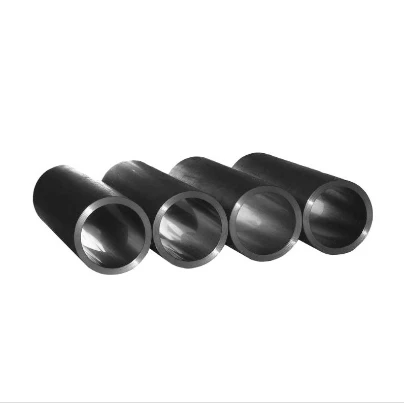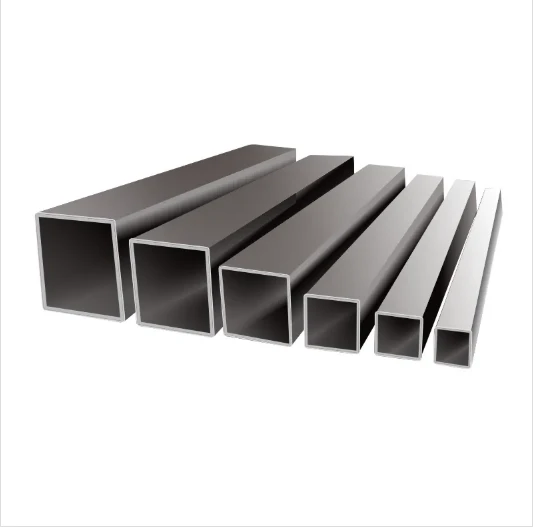- Introduction to structural tubing as an engineering backbone
- Scientific advantages and material specifications
- Market impact statistics and industrial usage data
- Manufacturer technical comparison analysis
- Custom fabrication processes and design capabilities
- Application case studies across sectors
- Implementation best practices and structural optimization

(structure steel tube)
Structure Steel Tube: Engineering Backbone of Modern Construction
Structural tubing forms the unseen skeleton supporting contemporary architecture and industrial design. These hollow-section members deliver superior strength-to-weight ratios compared to solid alternatives, with square tube structures providing particular torsional resistance. The manufacturing process involves either hot-rolling slabs into cylindrical forms or cold-forming coils into desired geometries, followed by precise welding. Material composition typically adheres to ASTM A500 specifications, ensuring consistent yield strength between 46-70 ksi depending on grade selection. This metallurgical consistency is paramount for structural engineers requiring predictable performance under load conditions.
Scientific Advantages and Material Specifications
Geometry fundamentally dictates structural performance. Square and rectangular tubes distribute stress uniformly across surfaces, delivering 40% greater torsional rigidity than comparable I-beams. Modern metallurgical techniques enable yield strengths reaching 70 ksi while maintaining 18-22% elongation properties, creating materials that withstand extreme deflection without fracture. Protective treatments like hot-dip galvanization (applying 3.9 oz/ft² zinc coating) extend service life beyond 50 years in corrosive environments. Key technical metrics include:
Deflection Performance: Rectangular tubes with 1:2 aspect ratios demonstrate 27% reduced deflection under uniform loading versus square profiles of equivalent weight.
Weld Efficiency: Continuous HFW (High Frequency Welding) processes achieve 98% joint efficiency, creating monolithic structures with minimal weak points. Post-weld normalization eliminates heat-affected zone vulnerabilities, preserving base metal ductility.
Market Impact and Industrial Adoption Metrics
Global demand for structural tubing reached 83 million metric tons in 2023, with construction accounting for 64% of consumption. Transportation applications demonstrate the strongest growth trajectory at 7.2% CAGR, driven by lightweighting initiatives where hollow sections reduce vehicle mass by 30-40% versus solid alternatives. Infrastructure projects now specify structural tubing in 78% of framed structures under 100-foot spans due to simplified erection sequences that decrease installation time by 45%. Economic analysis reveals lifecycle cost advantages of 18-22% over traditional materials when factoring in reduced foundation requirements and corrosion maintenance.
Manufacturer Technical Comparison Analysis
| Producer |
Tolerance Standards |
Max Section Size |
Yield Strength Range |
Specialized Services |
| ArcelorMittal |
ASTM A500 Gr C |
20" square |
46-65 ksi |
Laser cutting, custom perforations |
| Nucor Tubular |
ASTM A1085 |
16" x 24" rectangle |
50-70 ksi |
CAM-assisted mitering |
| Valmont Industries |
ASTM A847 |
14" square |
55 ksi (corrosion resistant) |
Galvanization post-fabrication |
| Zekelman Industries |
ASTM A500 Gr B |
30" diameter round |
42-58 ksi |
Spin forming |
Custom Fabrication Processes and Design Solutions
Advanced fabrication techniques enable tolerance control within ±0.015" for critical connection points. Proprietary processes like 3D tube laser cutting create complex miters with angular accuracy of 0.1 degrees, eliminating fitting inconsistencies during assembly. Customization options include:
Architectural Exposures: Brushed stainless steel finishes with Ra 35-50 microinch roughness values satisfy aesthetic demands while maintaining structural integrity. Powder coating thicknesses of 3.5 mils provide UV stability without compromising weldability.
Connection Engineering: Finite element analysis optimizes moment-resisting connections, reducing connection weight by 28% while improving force transmission. Specialized end-forming creates interlocking profiles that increase joint rigidity by 33% versus conventional brackets.
Industrial Application Case Studies
Stadium Roofing System: Minneapolis sports arena utilized 1.2 million pounds of custom-fabricated square tube structure to create 300-foot clearspan cantilevers. The structural design achieved 98% material utilization efficiency through optimized tube section transitions, reducing steel weight by 1,800 tons versus conventional truss systems.
Automotive Robotic Cells: BMW's South Carolina facility employs galvanized structural tubing frames supporting 9-ton automation equipment. Damping analysis confirmed vibration attenuation below 0.02g at critical frequencies, extending robotic component life by 21%. The system allowed 55% faster reconfiguration than bolted alternatives during model changeovers.
Optimizing Metal Tube Structure Implementation
Maximizing structural efficiency requires meticulous connection detailing and loading analysis. Best practices include moment-resisting joints engineered to exceed AISC connection coefficients by 15-20% margin, verified through physical prototyping. Recent seismic simulations demonstrate properly braced square tube structures withstand 1.8g lateral accelerations without collapse. Sustainable considerations now drive innovations like recycled-content electric arc furnace steel that maintains certified mechanical properties while reducing embodied carbon by 62% versus traditional manufacturing. Periodic non-destructive testing using phased array ultrasonics at critical nodes ensures integrity throughout decades of service.

(structure steel tube)
FAQS on structure steel tube
Q: What is a structure steel tube and its common uses?
A: A structure steel tube is a hollow metal component made from carbon or alloy steel. It’s widely used in construction, bridges, and machinery for its strength-to-weight ratio. Common applications include framing, support columns, and truss systems.
Q: Why choose a metal tube structure over solid steel beams?
A: Metal tube structures offer lighter weight, cost efficiency, and resistance to bending or twisting. Their hollow design reduces material usage while maintaining structural integrity. They’re ideal for projects requiring durability without excessive bulk.
Q: What are the advantages of square tube structures in construction?
A: Square tube structures provide flat surfaces for easier welding, bolting, and alignment. Their geometric shape ensures uniform load distribution and stability. They’re commonly used in gates, frames, and modular building systems.
Q: How do I select the right structure steel tube for my project?
A: Consider factors like load capacity, environmental conditions, and required dimensions. Square or rectangular tubes suit angular designs, while round tubes handle radial stress better. Consult engineering standards (e.g., ASTM) for material specifications.
Q: Can structure steel tubes be recycled or reused sustainably?
A: Yes, steel tubes are 100% recyclable without losing quality. Reusing them in projects reduces waste and carbon footprint. Many industries prioritize steel for its eco-friendly lifecycle and compliance with green building certifications.
 Afrikaans
Afrikaans  Albanian
Albanian  Amharic
Amharic  Arabic
Arabic  Armenian
Armenian  Azerbaijani
Azerbaijani  Basque
Basque  Belarusian
Belarusian  Bengali
Bengali  Bosnian
Bosnian  Bulgarian
Bulgarian  Catalan
Catalan  Cebuano
Cebuano  Corsican
Corsican  Croatian
Croatian  Czech
Czech  Danish
Danish  Dutch
Dutch  English
English  Esperanto
Esperanto  Estonian
Estonian  Finnish
Finnish  French
French  Frisian
Frisian  Galician
Galician  Georgian
Georgian  German
German  Greek
Greek  Gujarati
Gujarati  Haitian Creole
Haitian Creole  hausa
hausa  hawaiian
hawaiian  Hebrew
Hebrew  Hindi
Hindi  Miao
Miao  Hungarian
Hungarian  Icelandic
Icelandic  igbo
igbo  Indonesian
Indonesian  irish
irish  Italian
Italian  Japanese
Japanese  Javanese
Javanese  Kannada
Kannada  kazakh
kazakh  Khmer
Khmer  Rwandese
Rwandese  Korean
Korean  Kurdish
Kurdish  Kyrgyz
Kyrgyz  Lao
Lao  Latin
Latin  Latvian
Latvian  Lithuanian
Lithuanian  Luxembourgish
Luxembourgish  Macedonian
Macedonian  Malgashi
Malgashi  Malay
Malay  Malayalam
Malayalam  Maltese
Maltese  Maori
Maori  Marathi
Marathi  Mongolian
Mongolian  Myanmar
Myanmar  Nepali
Nepali  Norwegian
Norwegian  Norwegian
Norwegian  Occitan
Occitan  Pashto
Pashto  Persian
Persian  Polish
Polish  Portuguese
Portuguese  Punjabi
Punjabi  Romanian
Romanian  Samoan
Samoan  Scottish Gaelic
Scottish Gaelic  Serbian
Serbian  Sesotho
Sesotho  Shona
Shona  Sindhi
Sindhi  Sinhala
Sinhala  Slovak
Slovak  Slovenian
Slovenian  Somali
Somali  Spanish
Spanish  Sundanese
Sundanese  Swahili
Swahili  Swedish
Swedish  Tagalog
Tagalog  Tajik
Tajik  Tamil
Tamil  Tatar
Tatar  Telugu
Telugu  Thai
Thai  Turkish
Turkish  Turkmen
Turkmen  Ukrainian
Ukrainian  Urdu
Urdu  Uighur
Uighur  Uzbek
Uzbek  Vietnamese
Vietnamese  Welsh
Welsh  Bantu
Bantu  Yiddish
Yiddish  Yoruba
Yoruba  Zulu
Zulu 













